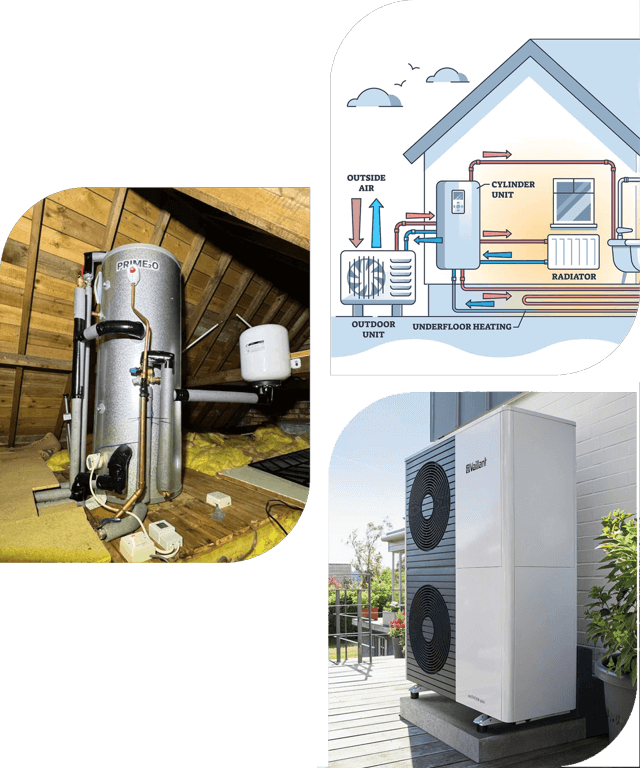Based in the centre of Lincolnshire
Air Source Heat Pump Installation.
Air source heat pumps have become increasingly popular over the last decade as they offer a reliable method of domestic heating and hot water using only a domestic electricity supply. Taylor's is one of the best known names in Lincolnshire for the supply, installation and maintenance of air source heat pumps, and our many happy customers have appreciated the speed, professionalism and friendliness of our team of engineers.
In contrast to some other installers, we offer a free site survey and heat loss calculations so you can investigate the possibilities and potential savings at no cost to you.
In contrast to some other installers, we offer a free site survey and heat loss calculations so you can investigate the possibilities and potential savings at no cost to you.












BENEFIT FROM THE £7,500 GOVERNMENT GRANT
A Complete Air Source Heat Pump Installation
The massive £7,500 massive government grant makes the cost of an air source heat pump installation similar to that of a new oil boiler.
If your existing pipework and radiators are suitable for an air source heat pump system, the cost to you could be as low as £2,000 for a brand new air source heat pump and hot water cylinder including fitting and wiring in.
We fit, service and maintain many different brands including Midea, Grant, Vaillant, Warmflow and many, many more!
Ask for a free survey - we will come to your property at a date and time to suit you and measure the rooms so we can calculate the heat loss in your property and recommend a suitable air source heat pump which will work the most efficiently for your home.
If your existing pipework and radiators are suitable for an air source heat pump system, the cost to you could be as low as £2,000 for a brand new air source heat pump and hot water cylinder including fitting and wiring in.
We fit, service and maintain many different brands including Midea, Grant, Vaillant, Warmflow and many, many more!
Ask for a free survey - we will come to your property at a date and time to suit you and measure the rooms so we can calculate the heat loss in your property and recommend a suitable air source heat pump which will work the most efficiently for your home.
One of Lincolnshire’s most respected names in air source heat pump installation and servicing.
Please use the form below to book your free air source heat pump survey. We will then contact you to discuss your requirements and arrange a surveyor visit.
Established in Lincolnshire 1976
Local, Trusted and Professional
Lower your energy bills with an efficient solar panel installation
Install solar batteries and store the electricity generated by the sun or low rate electricity.
Generate hot water from the
power of the sun and reduce
your energy bills.
Install an air source
heat pump and benefit from
the £7,500 government grant
Experience year-round comfort
and energy efficiency with a ground
source heat pump installation
Local and reliable air and ground
source heat pump servicing and
maintenance throughout the year.
From ground works to plumbing
in, we offer a full installation
service
We work with all the major
manufacturers so can offer you
the best solution for your home
We’ve been servicing and
maintaining oil boilers since 1976
- please click for details!
Testimonials
What Our Customers Say

"All works carried out very well. All the men that came here to do the work were very nice, very efficient... Excellent service."
LG, Spalding, 4/10/2023

"All work carried out very professionally from start to finish."
LA, Louth, 15/4/2023

"Job well done"
MJ, Frampton West, 13/10/2023

"Excellent Work."
BB, Mablethorpe, 8/10/2023

"I had a lot of problems with my heating system. Simon was very helpful with my initial enquiry and Ed the engineer was excellent, nothing was too much trouble, he was more than happy to answer any questions I had. It was such a pleasure to see someone take such pride in their work. I only wish I had used Taylor's when I first moved to Linc's years ago."
MS, Toynton St. Peter, 24/12/2023








